The most rewarding aspect of the Monterey Institute is the students. Okay, it’s the weather. But the students are a close second.
We have, for instance, an embarrassment of Chinese-speaking graduate students. One of our best, Jonathan Ray, has been staring at Chinese social media sites. While most young Chinese men largely surf for smut, Jonathan has discovered titillating images of the sort familiar to readers of this site: wonkporn!
Over the past few months, images of at least three new Chinese transporter-erector-launchers have appeared on various Chinese social media sites. Here is our best effort at beginning to sort through them. Consider this a first cut. What we really need to do now is to start modeling the canisters to work out what sort of missiles might be inside.
Show and TEL
Jeffrey Lewis and Jonathan Ray
1.
Second Artillery Transporter-Erector-Launchers in Chinese Social Media
Over the past year and a half, Chinese bloggers have posted images of at least three new-style transporter-erector-launchers (TELs) and their respective missile canisters. These images depict (1) a TEL with at least six axles, (2) a 6-axle TEL, and (3) an 8-axle TEL.
Since 2009, China has steadily replaced the old-style TELs for its DF-15 and DF-21 ballistic missiles with new-style TELs produced by the Wanshan Special Vehicle (WSV) Company. WSV-produced TELs are clearly different in style from previous Chinese TELs and resemble those manufactured by MAZ/MZKT in Belarus, with whom Wanshan established a joint-venture company. The TELs are similar in style to those that North Korea has displayed for its Musudan intermediate-range ballistic missile (IRBM) and new KN-08 ICBM. (WSV appears to have produced the TEL for the KN-08.)
The photographs posted by Chinese bloggers appear to show three more new-style TELs that are clearly larger than known TELs for the DF-11, DF-15 or DF-21. The angles on the photographs are poor and in some cases key features are obscured, either deliberately or through hasty photography.
With these cautions in mind, our preliminary assessment is that these TELs are for three different missiles, including the DF-31/DF-31A. Other possibilities include a new MRBM or IRBM, a new ICBM under development, or China’s SC-19 exo-atmospheric interceptor. More definitive conclusions require estimates of canister size and the maximum loading of the TELs.
2.
At Least 6-Axle TEL
On November 3, 2011, Weibo (Chinese Twitter) user “Richard潇” posted the a picture of a TEL with at least six axles. (Four wheels are visible, with two wheels obstructed by the photographer’s hand.) The TEL’s wheel-configuration is similar to a TEL that appeared in Pyongyang in 2010 carrying the Musudan intermediate-range ballistic missile (IRBM). Although the chassis appears similar, the image taken in China shows a TEL with a canister and a different erector.
The original picture and post are no longer on “Richard潇”’s Weibo account, but a copy is available on his BBS blog:
The text reads: “Hanchuan, accidentally encountered a missile [s: very formidable].” (The “s:” appears to be a Chinese emoticon to express awe.)
Hanchuan (汉川) is a county-level city in Xiaogan (孝感), Hubei Province. The Wanshan Special Vehicle Company’s factory is located in Xiaogan, Hubei Province.
3.
6-Axle TEL
On February 17th, two bloggers posted pictures of a six-axle TEL, claiming it is a DF-25 IRBM. The bloggers reposted the image from an automobile news site. One of the two bloggers claims that the photographer was on vacation in Xinyi City in Xuzhou (新沂市, 徐州), Jiangsu Province. There are no reported Second Artillery bases within 200 kilometers of Xinyi City. The image may show either a new IRBM deployed at an unreported launch brigade or in transit from the Nanjing Guided Missile plant 200 kilometers to the south.
4.
8-Axle TEL
On February 8th Xilu.com, a Chinese military news site, posted what looks like an eight-axle TEL, but with the cargo cropped out. The image was titled – “The Second Artillery’s Newest Dongfeng Exposed; The chassis that an internet user photographed is a model number never seen before” (“二炮最新东风导弹曝光网友拍摄底盘是从未见过的型号”) – but not accompanied by any explanatory text. Chinese bloggers were disappointed but not surprised.
Then on March 6, Sina Military Forum user “Red Arrow 73 (红箭73)” posted a different and complete picture of a similar (possibly even the same) eight-axle TEL carrying what he claims is a DF-31.
There are no geographic data about the location of this TEL.
This is the largest TEL spotted in China to date. In 2010, the Department of Defense said, “China may also be developing a new road- mobile ICBM, possibly capable of carrying a multiple independently targeted re-entry vehicles (MIRV).”
Fewer than 10 bloggers have reposted the picture, and have speculated the missile is a DF-41 and that the design is similar design to the Russian Topol-M. In 2012, one press report in the U.S. claimed the Second Artillery conducted a “DF-41” flight test although the report is not independently confirmed. One thread on a Chinese blog describes the TEL’s missile as “又粗又长,” which translates as “both rough and long.” The conversation soon degraded; it is not safe for work if your boss speaks Chinese.
A similar 8-axle WSV-manufactured TEL appeared in North Korea’s 2012 military parade carrying the KN-08 ICBM. As in the case of the Musudan, however, despite a similar chassis, the TEL in China carries a canister and has a different erector. Shipping documents obtained by Asahi and published by James Hardy for Jane’s, as well as a press release posted on the WSV website, suggest that WSV manufactured the TELs seen carrying the KN-08.
5.
China’s Ongoing TEL Upgrades
While these three TELs are of different sizes, they all appear to be WSV-manufactured and, at least in style, resemble MAZ models. In the 2009 National Day Parade, China paraded DF-15 and DF-21 with new WSV-style TELs that replaced older towed configurations.
For example, here are before and after images of the DF-15:
Here are “before” and “after” images of the DF-21:
The 2009 parade also included a DF-11A, which was carried on a WSV-style TEL. (The DF-11 appears to be the first Chinese missile that received a WSV-style TEL dating to at least 1999.)
China displayed the DF-31A, however, with an old-style towed erector-launcher (sometimes called a MEL or Mobile Erector Launcher).
For some time, observers have wondered when China’s road-mobile ICBM force would receive new vehicles.
We now have images of what appear to be three new TELs, one or more of which is apparently for the DF-31 series.
(1) The smallest appears to have six axles. This TEL is larger than the TEL for the DF-21 medium-range ballistic missile (MRBM), which has five axles, and may correspond to a new MRBM or IRBM.
(2) It is unclear how many axles the next largest TEL has, but the wheel configuration indicates six or more and a different chassis from the 6-axle TEL. It is possible that this is either a DF-31 or DF-31A TEL. The old DF-31 TEL had eight axles, but in a towed configuration.
(3) Finally, the 8-axle TEL is the largest seen to date in China. It is presumably for China’s longest-range mobile ICBM, either a DF-31A or the reported DF-41.
One possibility is that the three TELs are for the DF-31, DF-31A and the reported DF-41. Another possibility is that the TELs are for an unreported IRBM, the DF-31 and either the DF-31A or a reported DF-41. A third possibility is that one of the TELs is associated with China’s SC-19 hit-to-kill interceptor.
Further constraining the possibilities requires modeling the TELs and canisters in an effort to gauge the canister size and maximum load to provide a preliminary assessment of the missiles carried inside.
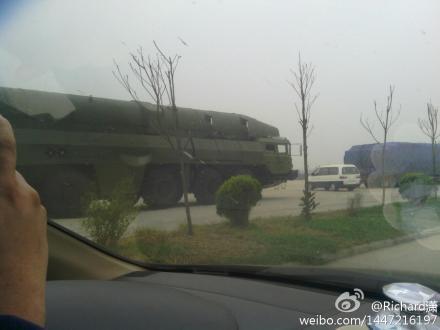


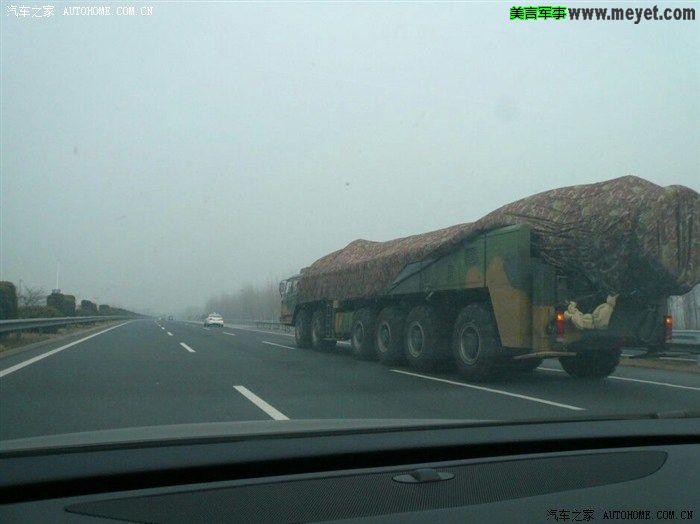
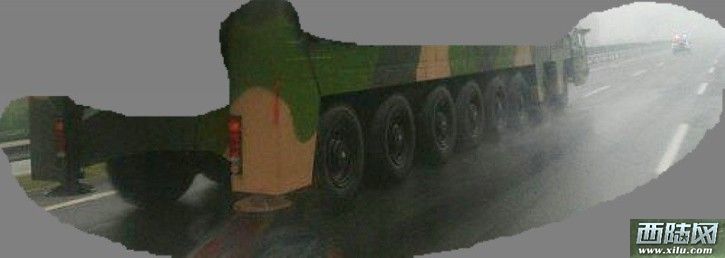
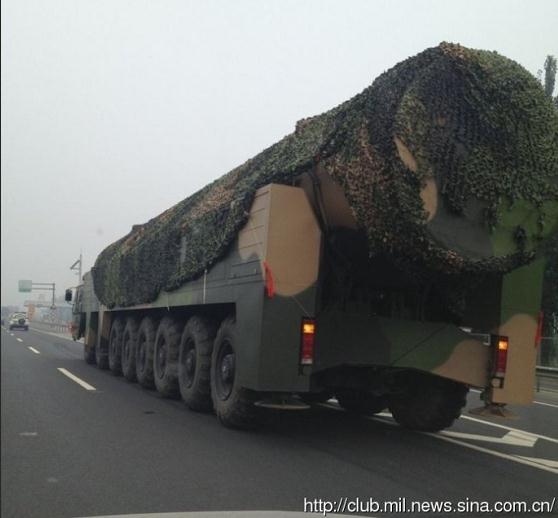



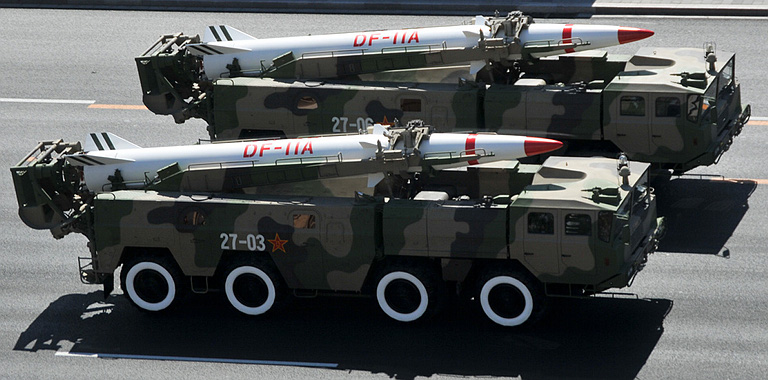
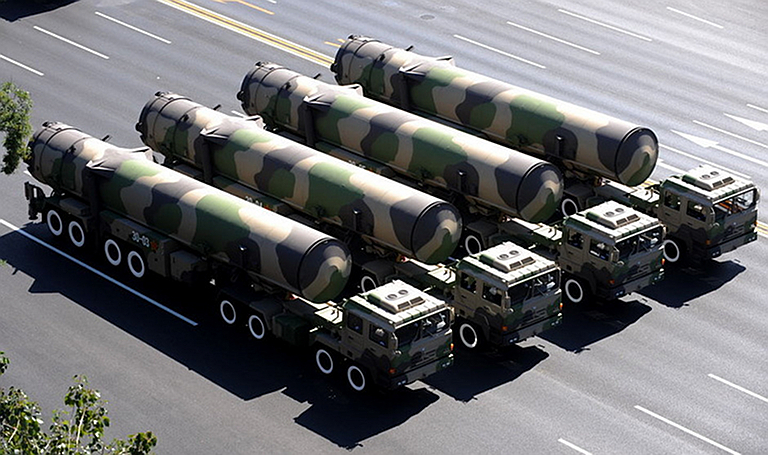





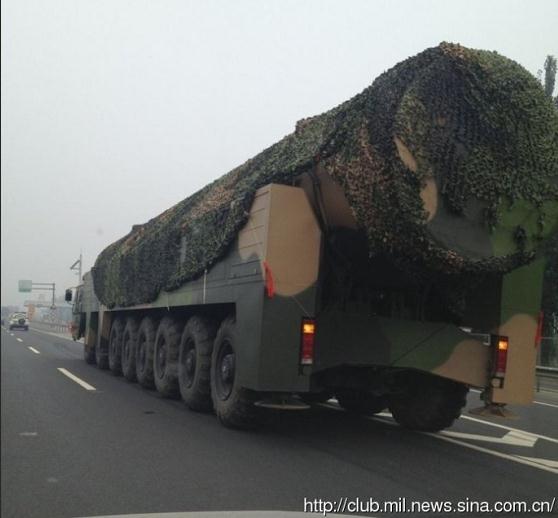

That’s so cool. TELs give me an erection.
Badoom PAH.
Re: the 6-axlers, I’m thinking about the flurry of 21D reporting from a few years back, along with China’s ever-increasing focus on their maritime interests (and, indeed, *other* people’s maritime interests). There was talk about MIRVing the 21Ds quite a long time ago, now, but it was hard to see where they’d find the weight. If they have managed a heavier two-stage conventional MRBM / ASBM with MIRV capabilities strapped on, that would very likely require a shift up to the 6-axle TEL.
It’s also the logical response to Aegis, which kicks buttock but is necessarily vulnerable to saturation (being strapped, as it is, to an extremely expensive platform. That’s an arms race they’re well in a position to win if they can remotely keep up in tech).
Wildly speculative, of course, but strategically I’d say land-based anti-ship ballistic missiles have got to be a major priority for them, and a 6-axle TEL would be carrying about the right weight range for a next-gen improvement over the “single-MARV-21D” system.
AEGIS was designed to handle saturation attacks by large fleets of Bear / Backfire with antiship missiles.
The situation with DF-21 antiship use is somewhat different, in that you can employ good decoys (cough, groan) until the reenter the atmosphere, and possibly somewhat beyond. But the number of DF-21s fired would likely be lower than the sorts of attacks we were afraid the Soviets might try against carrier groups…
To put some numbers on this, an Aegis cruiser has 122 vertical-launch cells, nineteen missile command channels and four AN/SPG-62 fire control radars; the latter are needed only during the last 4-5 seconds of the engagement.
SM2 block IV missiles, optimized for endoatmospheric ballistic missile defense, have a flyout velocity of ~1.5 km/s.
A DF-21D warhead will have a mean velocity during reentry of ~3 km/s, and at long range an entry angle of roughly 45 degrees. Assuming the atmosphere filters out lightweight decoys at 100km altitude, and adding 50% margin to the fire-control radar scheduling, there is still time to engage twelve targets from each incoming salvo, or eight targets with a Shoot-look-shoot engagement.
Aegis destroyers only have three fire control radars, and probably proportionately fewer control channels, so would only be able to conduct nine single or six S-L-S engagements. A typical USN carrier battle group with three AAW escorts would thus be able to engage 18-24 incoming targets with full reshoot capability. That’s at least two full brigades of DF-21D missiles assuming we only have to engage single warheads, and it doesn’t count any exoatmospheric intercepts.
The extent to which the Chinese can stuff MIRVs or credible endoatmospheric decoys into the limited payload capacity of a DF-21D is debatable, but it certainly is not going to be easy for them to take out CVBGs with that system. A larger missile would help, but it takes more than a suspicious extra axle on a TEL to put credence to that fear.
Sorry about the very late reply: yeah, the ASBM idea is wildly speculative, as I said, but I reckon it’s just the sort of thing that China will be going for – it fits their needs and follows their actions. Not saying “this is it”, but rather that it’s something to keep watching for.
Re: Aegis, to the best of my knowledge they’ve never been tested with more than 2 targets simultaneously, so yeah, if the Chinese come up with any kind of MIRVed ASBM, China will have (comparatively cheaply) put themselves in position to overcome basically the entire US navy in their area of interest. That’s got to be a powerful motivator, given their increasingly belligerent defence of “their” maritime interests. Frankly, I’d be gobsmacked if they didn’t go for it.
(My other wildly speculative thesis, btw, as I might have mentioned here-abouts, is that the growing Chinese upper-middle class represents a significant potential risk to regional stability. We were all waiting for the oldies who cared about Taiwan to die off before quietly and peacefully resolving the issue formally, but, just as we’re seeing in South Korea, prosperous people can start getting more aggressively nationalistic, and canny leaders can be sorely tempted to fan those embers and ride the mixed metaphor).
Interesting that there appear to be four (or at least 2) jackstand feet forward on the cutouts on the big new vehicle, where the others don’t have them. The chassis might not be unified in a normal sense.
Did North Korea get complete TELs from WSV for its KN-08s, or just some chassis?
Evidence seems to indicate just chassis, they appear to have built the TEL components themselves.
This makes sense for a couple of reasons. One, China would want plausible deniability, and selling the NKs truck chassis is way different than selling them completed TELs.
Second, the NK TEL needs to match the NK missile, and while it would be possible for the NKs to send out specs to the manufacturer, that would be giving away a LOT of info to a foreign contractor. it makes more sense to have the people who build the missile also build the TEL so they can be sure everything fits together properly and the data stays in-house.
Don’t forget the new DF-16 SRBM.
http://i.imgur.com/gmOkPut.jpg
http://i.imgur.com/t7J2vdj.jpg
http://i.imgur.com/atiNviS.jpg
There are plenty of PLA bases inside Xuzhou and one underground MSA, but i don’t think that this this city is suited for a DF-21 base, considering the distance to the coast which is only 193km (shortest way). If the U.S. Air Force would conduct an preemptive strike against missile systems based in the proximity of the city with fighter jets, there would’t be much time left for the Chinese, to counter it.
Yes, they would probably detect the aircraft carrier before the jets take off, but i think that the 2nd artillery corps should take this into consideration.
The Jinan and Laiwu DF-21/31 bases can be put off the table i think. The TEL would have taken a different route then.
Laiwu: 36 14 05.96 N 117 42 58.67 E (check out the 3/9/2011 imagery. There are some trailers with a length of 13m)
Jinan: 36 37 11.64 N 116 57 32.30 E
The “at least 6 axle TEL” could be on it’s way to this base: 32 32 34.65 N 110 41 23.86 E
but i’m not sure.
Well, the 8 axle TEL will remain a mystery without any geographical information. I could imagine, that this is an updated DF-31A Version on it’s way to the Shaoyang base. This base was completed sometime in 2012, so the base may still await the arrival of all units. The towed DF-31A version offers almost no terrain capability, which makes the whole system very inflexible and vulnerable to preemptive strikes.
Towed DF-31As can be seen at this location: 36 56 54.84 N 101 39 58.34 E
White-wall tires on a camouflaged vehicle! What is that about, other than a sense of style mired in the ’50s?
Appears to be on the parade versions of the TELs, the road shots have tires that are less hip.